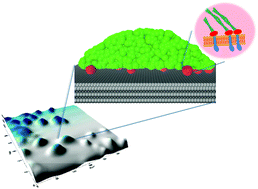“Active” drops as phantom models for living cells: a mesoscopic particle-based approach
Abstract
Drops and biological cells share some morphological features and visco-elastic properties. The modelling of drops by mesoscopic non-atomistic models has been carried out to a high degree of success in recent years. We extend such treatment and discuss a simple, drop-like model to describe the interactions of the outer layer of cells with the surfaces of materials. Cells are treated as active mechanical objects that are able to generate adhesion forces. They appear with their true size and are made of “parcels of fluids” or beads. The beads are described by (very) few quantities/parameters related to fundamental chemical forces such as hydrophilicity and lipophilicity that represent an average of the properties of a patch of material or an area of the cell(s) surface. The investigation of adhesion dynamics, motion of individual cells, and the collective behavior of clusters of cells on materials is possible. In the simulations, the drops become active soft matter objects and different from regular droplets they do not fuse when in contact, their trajectories are not Brownian, and they can be forced “to secrete” molecules, to name some of the properties targeted by the modeling. The behavior that emerges from the simulations allows ascribing some cell properties to their mechanics, which are related to their biological features.


 Please wait while we load your content...
Please wait while we load your content...